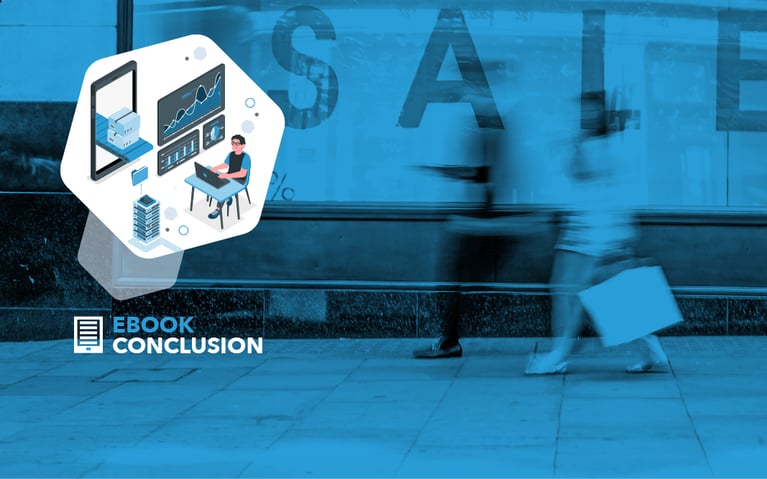Metrics drive business decisions. It’s what helps identify strengths and challenges and areas that need to adapt or evolve. Ecommerce brands utilize a broad spectrum of metrics, from measuring KPIs in marketing and sales to fulfillment.
While clickthrough rates (CTRs), conversions, and cost of goods sold (COGS) provide crucial metrics, order-to-delivery data is critical as well. One number in particular assesses how well your fulfillment functions: The Perfect Order Rate (POR).
What is the perfect order rate?
When a customer places an order, brands set expectations. For example, the item is in stock and can be delivered within two days for free. In many cases, conversion is achieved through these retailer promises. After the purchase is complete, order fulfillment begins.
Perfect Order Rate indicates how well your fulfillment and delivery processes are performing. It’s a supply chain logistics KPI that measures whether operations are meeting customer expectations and demands. In other words, POR looks at how well you successfully deliver orders without any issues.
Calculating POR
In a survey of over 1,000 shoppers, customers said free shipping and fast delivery are critical to a good shipping experience. Respondents were flexible: They’d take longer shipping times as long as it was free, but that free was key, according to 80% of shoppers.
Other key takeaways were that free returns for a risk-free purchase was a big consideration and that keeping products in stock and ready to ship was essential. These insights also showed that consumers rarely forget a poor delivery experience and that brands still struggle somewhat to provide a seamless journey.
By measuring Perfect Order Rate, retailers can identify problem areas and aim to improve the post-purchase experience.
In general, Calculating POR depends on the business, but benchmarks typically include:
- Orders that arrive on time and at the correct locations: This means orders delivered within the specified timeframe to the designated address.
- Orders that arrive damage-free: It’s not uncommon for packages to be damaged en route. It’s essential for brands to package and ship in a way that minimizes the risk and keeps the content safe and secure.
- Orders that arrive with correct contents and labeling: Orders should contain correct products, invoicing, labels and any other necessary documentation.
The ability to understand and calculate POR helps retailers create a frictionless customer experience by removing late deliveries or incorrect or damaged orders.
Calculating your Perfect Order Rate would look like this:
You receive 750 online orders in a month. Of these orders, 18 were damaged during transit, 3 had incorrect contents and 101 were delivered late.
18+3+101=122 order errors
122/750 x 100 = 16.3 % error rate
100 - 16.3 = 83.7% Perfect Order Rate
Ecommerce brands should aim for a 95% POR or above. Use results to identify where in the supply chain the most errors occur – and create and employ strategies to minimize the amount and improve operations. Retailers can’t prevent everything, such as transportation accidents, severe weather or the occasional human or computer error, but they make efforts to get processes as close to perfect as possible.
How improving POR improves customer satisfaction
Consumers have begun to focus more on shipping and delivery. Additionally, retail giants have established new expectations like same-, two- or three-day delivery, fast or low-cost shipping and the ability to track orders. In fact, 88% percent of shoppers are willing to abandon a purchase due to unsatisfactory shipping options and 85% won’t return to a retailer if the shipping experience is bad.
Delivering the right orders within the right timeframe means happy customers – and happy customers turn into loyal customers. It helps to look at ways to fulfill orders more effectively and enhance the overall experience, ensuring damage-free packages, real-time updates and fast and free delivery.
How does changing consumer demands affect the Perfect Order Rate
Perfect order metrics don’t account for evolving demands or nuanced desires. Simply getting your product there efficiently and accurately isn’t enough to delight or personalize the overall experience. It will help you earn a good reputation but may not nurture a memorable brand moment and loyalty.
Exceptional customer experiences embody the whole journey, from discovery to post-purchase. Choice, flexibility, personalization, branding and support are all part of it.
Taking your perfect order beyond shipping and delivery
The perfect order starts at purchase. And ideally, the brand has worked to streamline the entire ecommerce shopping experience by optimizing :
Navigation
No matter the channel, consumers should be able to move from product to checkout seamlessly. When shopping, customers should be able to find relevant information, stock availability and be able to move directly to checkout. Brands can further personalize with recommendations and ensure the experience is adapted to whatever device or channel the customer uses.
Payments
Consumers want options, and payments are a place to provide them. The expansion of methods allows online retailers to accept credit cards, PayPal, Apple Pay, BNPL (Buy Now, Pay Later) services and more. Your payment options may determine whether you have an order to process or not.
Loyalty programs
Loyalty programs are a huge draw. They attract customers, and 70% of US consumers state loyalty programs as a brand loyalty driver. They can add to the order experience by providing free shipping or adding extras to a purchase. However, ensuring that any “extras” you promise are executed to maintain perfection is crucial.
Shipping
Customers expect multiple shipping options – or at least premium shipping. While many customers are fine with standard shipping as long as it’s free, others want swift shipping and are willing to pay for it. Customer retention depends on what you offer and that you meet those expectations. This makes it critical to optimize fulfillment and shipping services, whether it’s having a multi-node network, micro-fulfillment or choosing fulfillment close to your primary customer hub.
Communication
Today’s shoppers are connected, making it easier to communicate via text, email, app or online account. The post-purchase experience involves keeping your customer updated:
- When their order is received and shipped
- Where it’s at
- If it has been delayed
- When it has been delivered
This communication is a large part of your POR rate efforts, meaning you should confirm correspondence with each order. It’s also essential to implement real-time tracking, so purchasers have the power to check their order’s progress rather than waiting for correspondence or having to reach out to customer service.
Unboxing
Unboxing has become a trend and is not likely to go away anytime soon. Brands must look at small ways to make receiving and unboxing an order attractive. This includes branding your packages, adding a free gift, using sustainable materials or adding anything that amplifies the feel of value. Unboxing has a broader reach than just the order recipient – a quick Google search unearths thousands of unboxing videos with significant views.
Returns
Returns management is another vital part of order satisfaction. First, simply let the customer know that it’s easy and clearly lay out options and your policy. Returns can greatly impact customer satisfaction – even if it isn’t part of the Perfect Order Rate, it still affects the post-purchase experience.
Achieving a high Perfect Order Rate may seem daunting, but aiming for faultless fulfillment and timely delivery is crucial for customer satisfaction. The more perfect orders you complete, the happier your customers will be. However, redefining your definition of the perfect order and how you measure it as customer expectations evolve is essential.
If you’re ready to improve your Perfect Order Rate, contact Cart.com today.
Subscribe to our emails for the latest industry insights!
By entering your email, you agree to receive marketing emails from Cart.com






